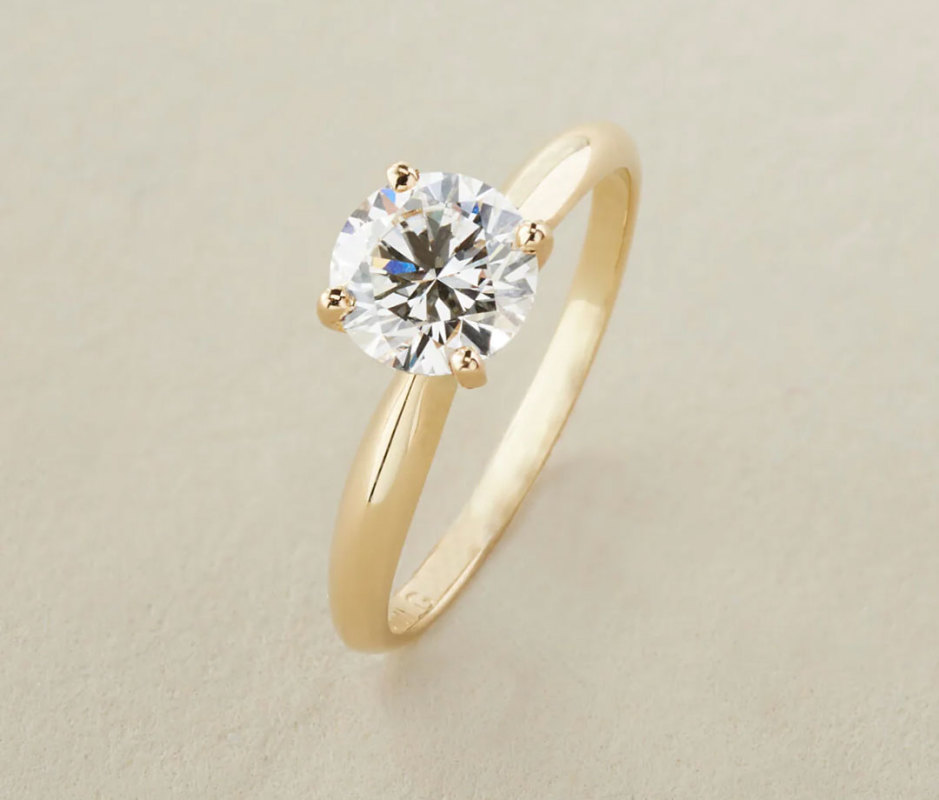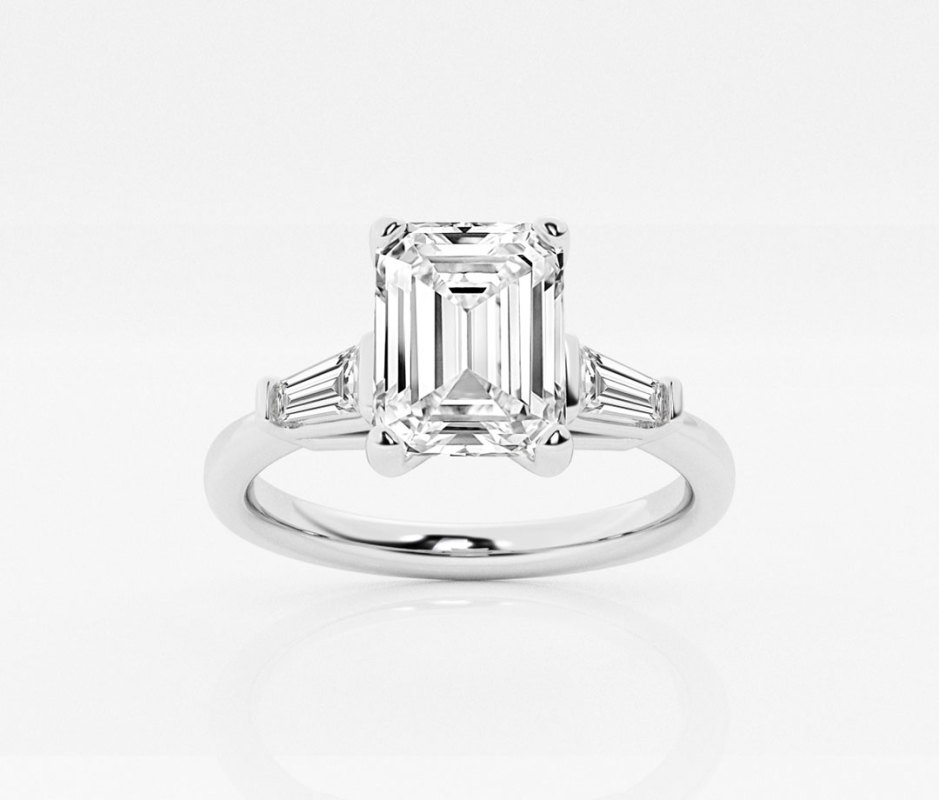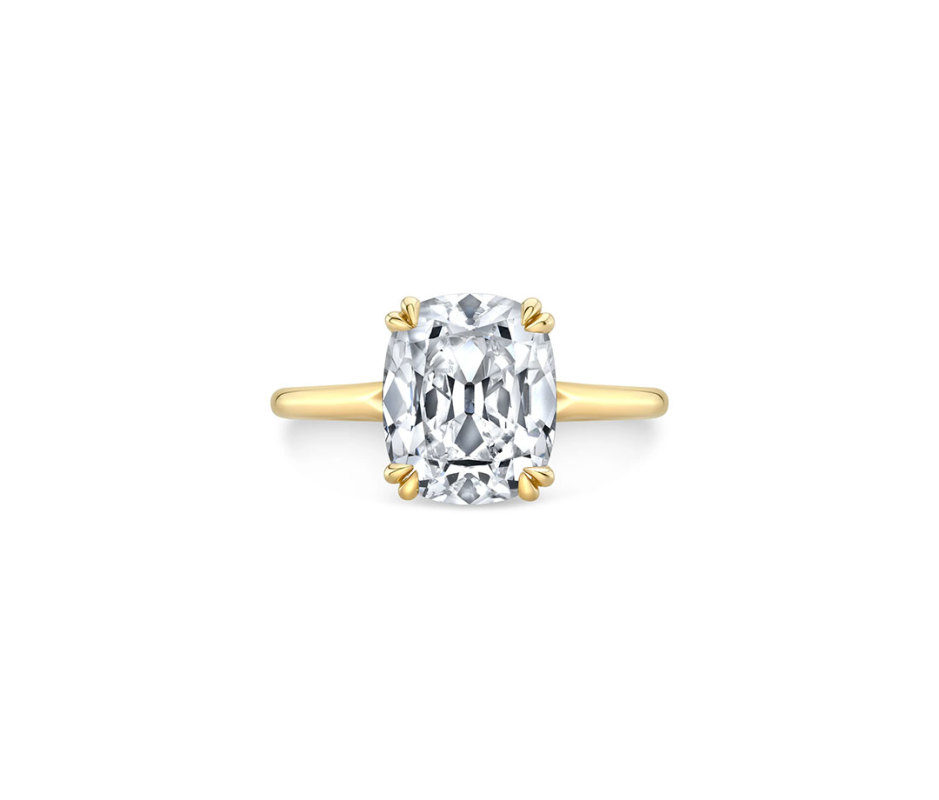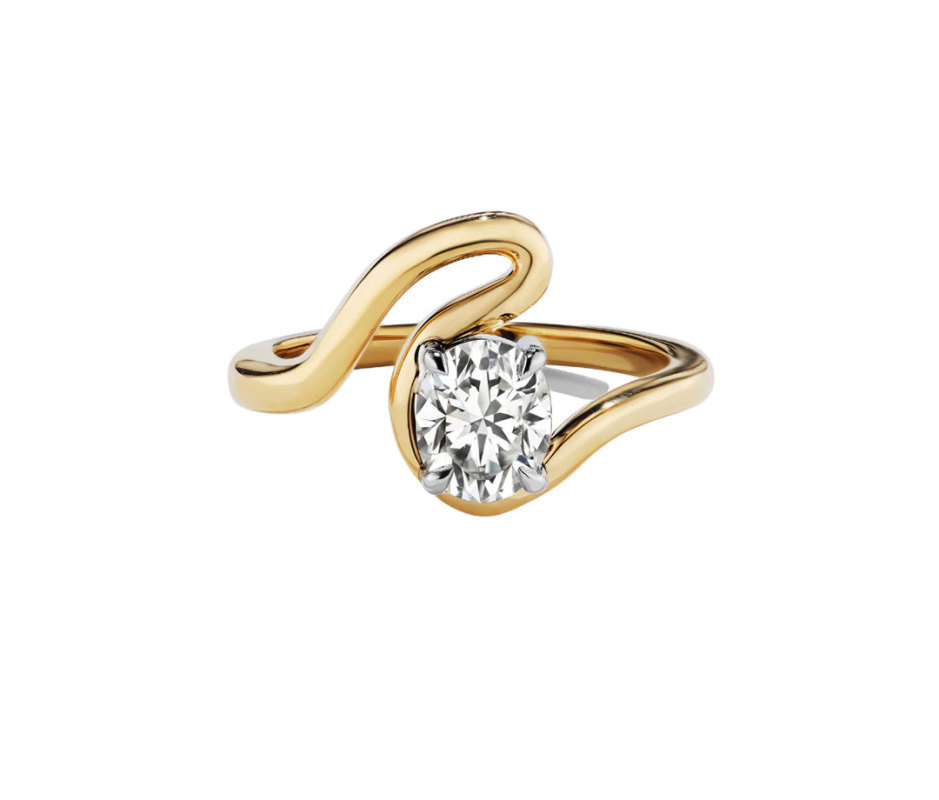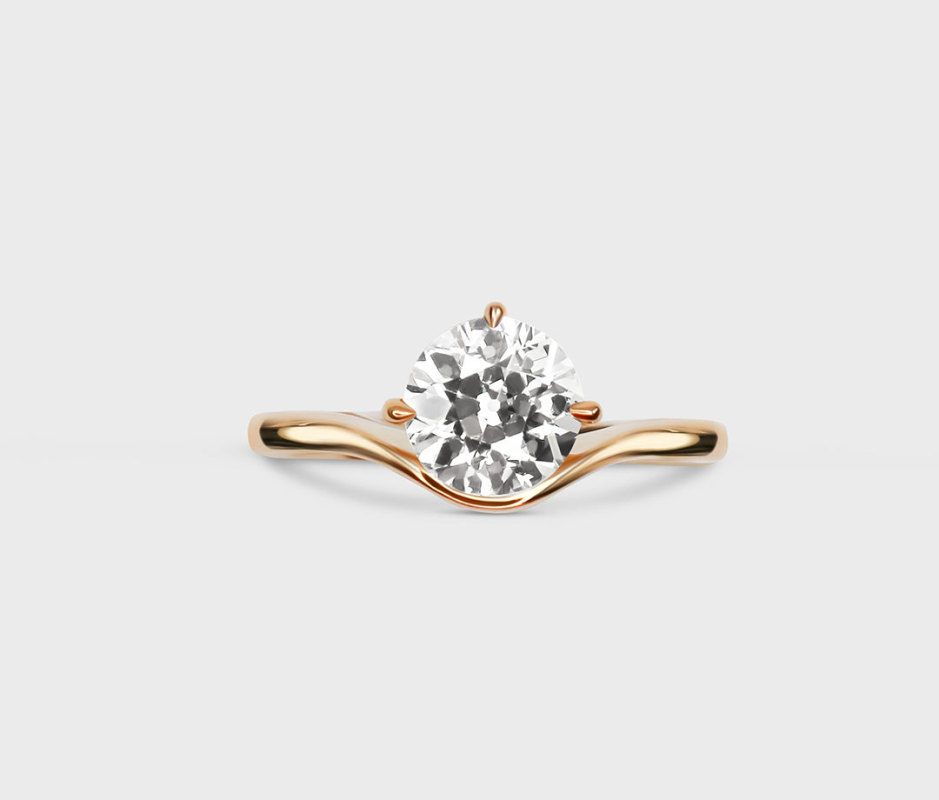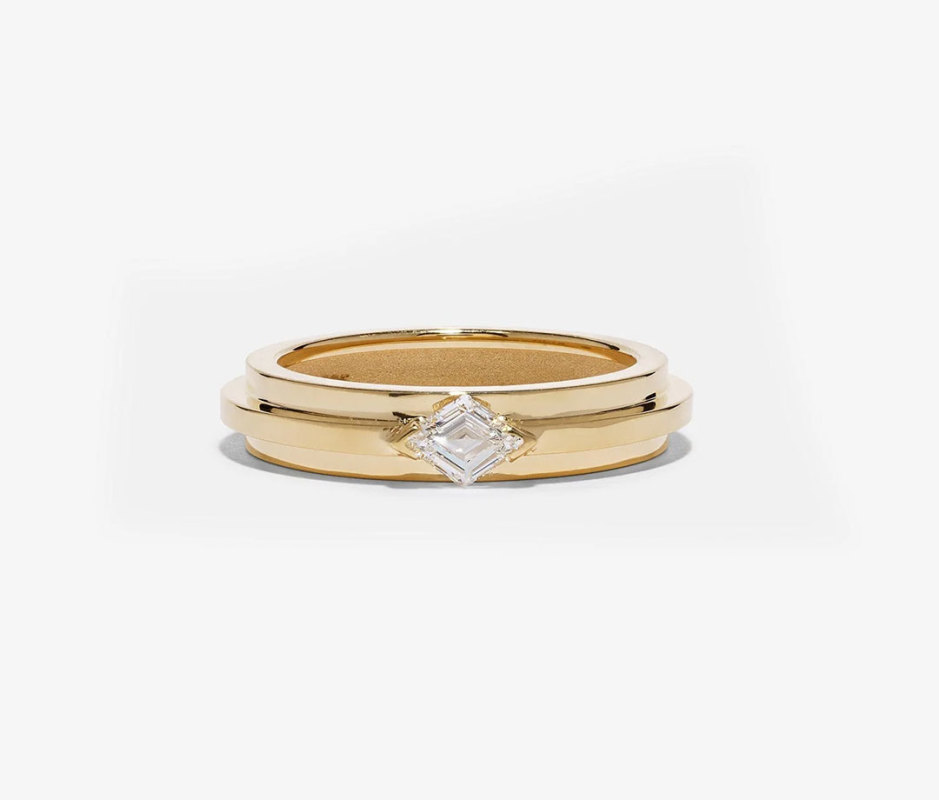Picking out an engagement ring is the first step in a life-changing process. No pressure, right? While there’s a certain gravitas to finding a ring fit for your future partner, if you’re armed with the right information, it’s possible to find something that suits your budget and your partner’s style that doesn’t fall into the trappings of the diamond industry’s dark side. That means shopping for ethical engagement rings that are conflict-free.
Historically, mined diamonds were the popular (and only) option when choosing a stone, but the diamond trade’s long history involved many atrocities. You’re probably familiar with the term blood diamonds. These are stones mined in war zones controlled by forces in conflict with the government and sold to finance war efforts, terrorism, insurgencies, or a warlord’s activity, per the United Nations.
Today, there are ways to ensure the jeweler you choose has ethical origins and you’re buying conflict-free diamonds. There’s also the advent of lab-grown diamonds, a much newer option, but one that’s grown in popularity because of its lower price point.
Related: 53 Christmas Gifts for Her: Ideas for Your Wife or Girlfriend
Over the last few years, consumers have shifted their focus to more heavily weigh the environmental and social impacts of their purchases. With an engagement ring being among the more expensive ones you’ll make, it’s important to be informed.
Ahead, we’re diving into the two main categories of ethical engagement rings: lab-grown diamond engagement rings and conflict-free mined diamond rings to help you settle on the right one for you and your partner.
The best overall lab diamond engagement ring goes to Vrai Five-Stone Heirloom Round Brilliant Engagement Ring. The company’s lab-grown diamonds are created in a zero-emission foundry with the added bonus of cutting out middlemen from its supply chain to keep prices more affordable. And our favorite ethical mined diamond engagement ring is the Aaryah 1.01ct. Nebula Ring, which comprises an oval diamond that adheres to the Kimberley Process and an upcycled, conflict-free platinum or 18K yellow gold band. It’s ethical and sustainable while offering a silhouette that stands out from the rest.
Why You Should Trust Us
I’m a writer, editor, and brand consultant with over a decade of experience working in the fashion industry. I have a B.A. in political economics and was most recently the senior fashion editor at The Zoe Report; my work has been featured in The Cut, Vogue, Harper’s Bazaar and more. In this article, I interviewed The Clear Cut founder Olivia Landau, a diamond expert, GIA graduate gemologist, and fourth-generation jeweler with experience at Tiffany & Co., plus the diamond wholesale industry; Antoine Borde, the CEO of Lightbox, an online retailer of lab-grown jewelry and loose diamonds; and Akshie Jhaveri, founder and creative director of Grown Brilliance, which specializes in lab-grown jewelry and engagement rings
Below, shop our favorite ethically sourced mined diamond and lab-grown diamond engagement rings. If you’re just beginning to research, scroll down to review what’s unique to each of these offerings.
Best Overall Lab Diamond Engagement Ring: Vrai Five-Stone Heirloom Engagement Ring
Courtesy Image
To make its engagement rings, Vrai converts greenhouse gasses into lab-grown diamonds in a zero-carbon-emissions foundry powered by the renewable energy of the Columbia River in Oregon. For a show-stopping number, go for the brand’s Five-Stone Heirloom Engagement Ring. You can select the metal (platinum, 18K yellow gold, 18K white gold, and 14K rose gold) as well as the center stone’s size (1, 1.5, and 2 carats) and shape (round brilliant, oval, emerald, radiant, cushion, marquise, asscher, and princess). Four baguette-shaped side stones frame the center diamond.
Best Lab Diamond Engagement Ring Under $500: Ritani Modern 6-Prong Solitaire Engagement Ring
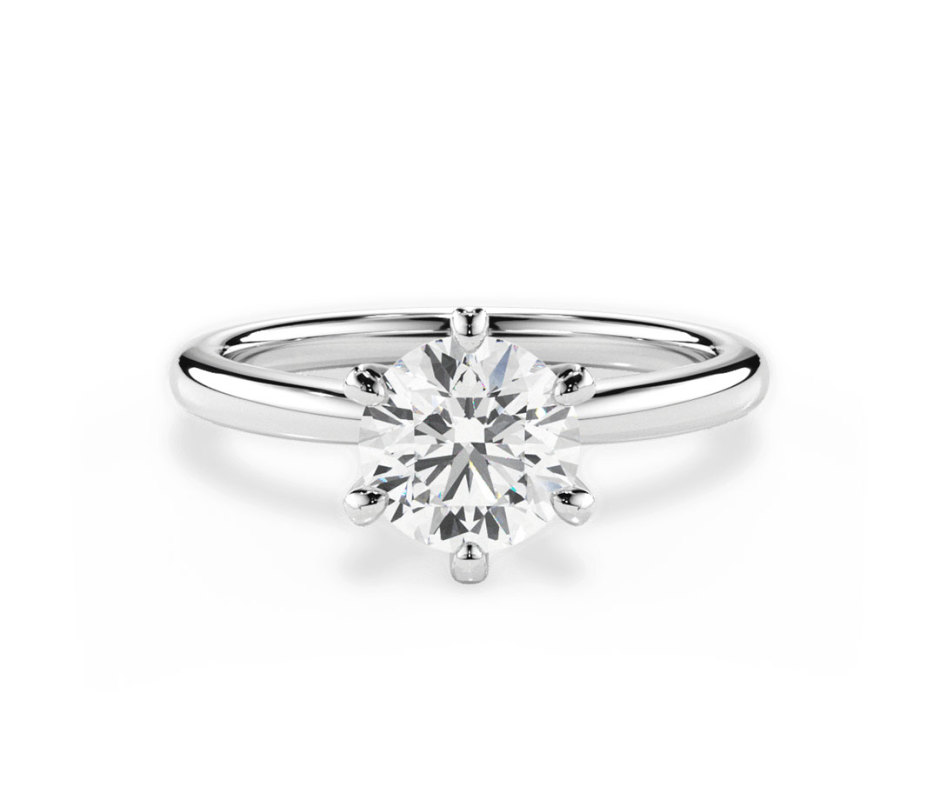
Courtesy Image
Classic styling doesn’t have to break the bank. Ritani’s 6-Prong Solitaire Engagement Ring boasts a round stone of your choosing (mined or lab-grown) secured with six prongs for security as much as style. Opt among 18K yellow gold, 14K white gold, 18K white gold, 18K rose gold, and platinum. To keep it under $500, spring for a .43-carat round lab diamond set in 14K white gold. Since its founding in 1999, Ritani has upheld the Kimberley Process and its strict ethical diamond sourcing standards. In 2012, Ritani partnered with Julius Klein Group (JKG), an American diamond manufacturing powerhouse, to sell its conflict-free diamonds online as part of its e-commerce platform. JKG has made substantial efforts to improve the diamond industry throughout Africa. In 2008, it invested $5 million to build a factory in Nambia’s capital city of Windhoek to sort and cut rough diamonds to provide stable, well-paying jobs for locals and foster a more holistic economy.
Best Brilliant Earth Engagement Ring: Lissome Ring
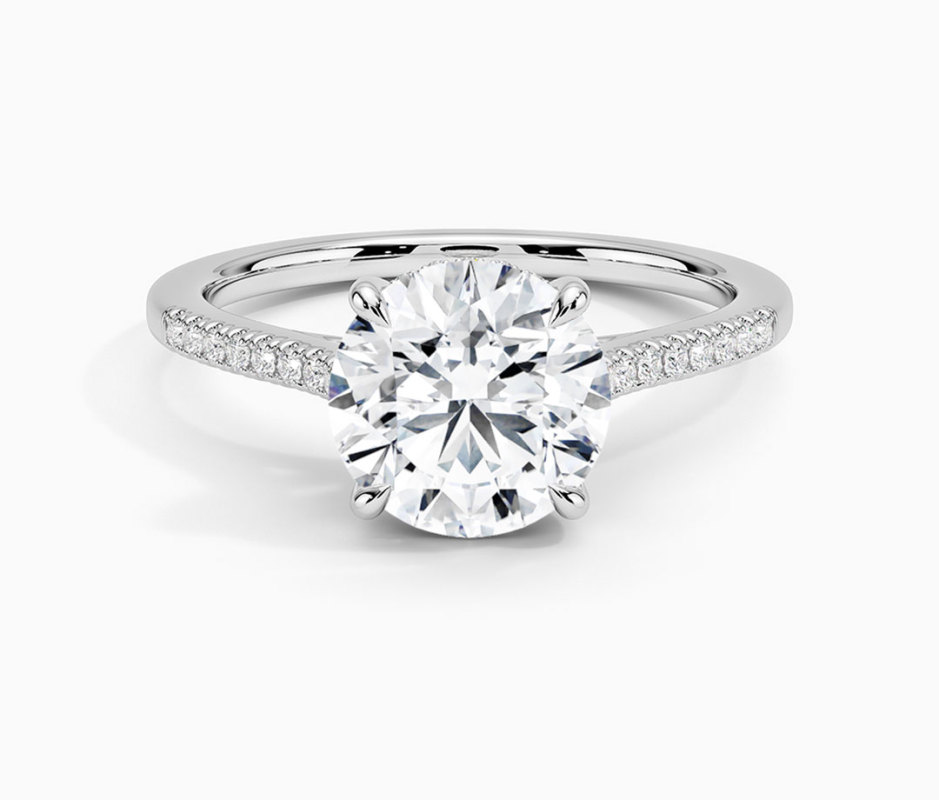
Courtesy Image
Aside from offering lab-grown diamonds, Brilliant Earth provides buyers with what it calls “beyond conflict-free” natural diamonds. These stones uphold mining practices and standards that protect against human rights abuses, minimize environmental degradation, maintain safe labor practices, support community development, and don’t finance rebel movements. Should you be in the market for a lab-grown diamond engagement ring, we love the Lissome Diamond Engagement Ring. Choose the setting first, then select lab-grown diamonds of different sizes and shapes, including round, oval, cushion, princess, emerald, asscher, and radiant.
More Lab Diamond Engagement Rings We Love
Best Engagement Ring With a Warranty: Peace Jewelers Solitaire Diamond Ring
Peace Jewelers offers a 10-year warranty on its rings, so you can always change your mind (hopefully just on the ring). The brand uses cultivated diamonds for its Solitaire Diamond Ring. Choose between a 1- or 2-carat stone and 14K yellow or white gold.
Best 2-Carat Diamond Ring: Grown Brilliance 2.25ct. Three-Stone Engagement Ring
Grown Brilliance 2.25ct. Three-Stone Engagement Ring features a center stone of your choosing bookended by tapered baguette-shaped lab-grown diamonds. Like other engagement rings on this list, you have the choice of 14K white gold, 14K yellow gold, 14K rose gold, and platinum. The center lab-grown diamond can be round, oval, cushion, pear, emerald, radiant, princess, marquise, asscher, and even heart-shaped in carat total weights from .8 to 2.3 carats. Grown Brilliance’s lab-grown diamond supply chain is carbon-neutral, thanks to offsets purchased from the United Nations carbon offset platform.
Best 3-Carat Diamond Ring: Jean Dousset Elle Antique Cushion Solitaire Lab Diamond Engagement Ring
If you’re looking to splurge on a big rock without dropping tens of thousands of dollars, head to Jean Dousset. The brand’s Elle Antique Cushion Solitaire Lab Diamond Engagement Ring is a whopping 3.57 carats set in 18K yellow gold. If her style is minimal but you want a ring that makes a statement, this is the one. Bonus: The ring is designed by the great-great-grandson of Louis Cartier (yes, of that Cartier).
Best Overall Ethical Engagement Ring: Aaryah 1.01ct. Nebula Ring
Courtesy Image
Aaryah offers artful designs for those who think outside the box. The brand has an in-house diamond wholesale team with the ability to source rare, exceptionally cut diamonds that aren’t widely available on the market. Those diamonds also happen to be ethically sourced, embracing the United Nation’s Kimberley Process to prevent conflict diamonds. When possible, the team uses recycled and certified fine metals to create pieces that are consciously made and intentionally designed. If you want antique diamonds, unconventional stone shapes, and distinctive bands and settings, shop Aaryah online or visit the flagship store in NYC’s diamond district. Our top pick is the Aaryah Nebula Ring. An oblong oval diamond is set in an upcycled, conflict-free platinum or 18K yellow gold band meant to mimic the amorphous shape of a nebula.
Best Catbird Jewelry Engagement Ring: Catbird Violette The Swan Ring
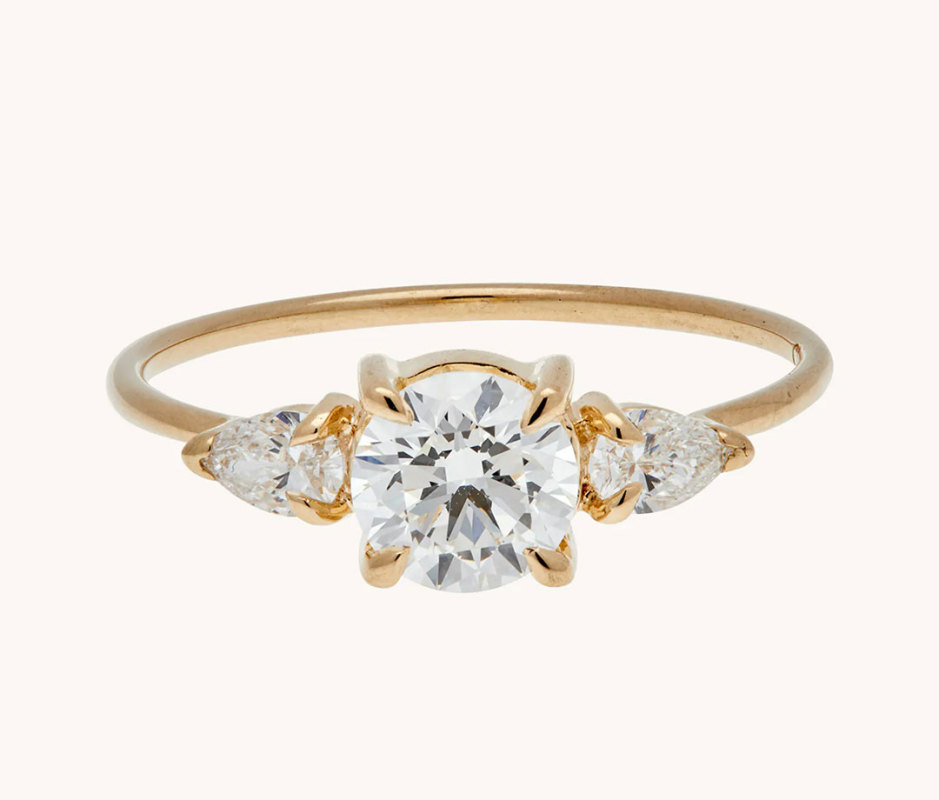
Courtesy Image
All of Catbird’s diamonds adhere to the Kimberley Process, but the brand also uses recycled brilliant cut diamonds in some of its pieces that are reclaimed from vintage and deadstock jewelry. This keeps Catbird from having to utilize newly mined diamonds. In the case of Violette The Swan Ring, all three stones are recycled diamonds: There’s a .70-carat brilliant cut recycled white diamond and two .14-carat brilliant cut pear recycled white diamonds set in recycled 14K gold.
Best Affordable Engagement Ring: Jennie Kwon Round Pear Equilibrium Ring
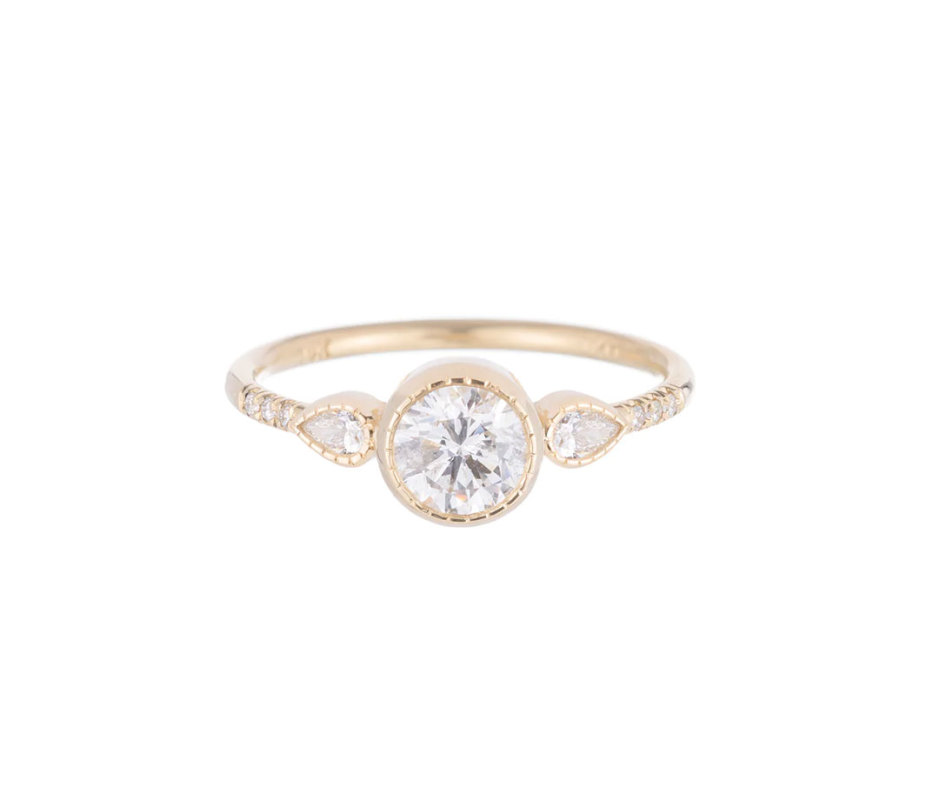
Courtesy Image
L.A.-based designer Jennie Kwon only uses ethically sourced conflict-free diamonds as well as gold that’s fair-mined and fair-sourced in its engagement rings. For something special yet conservatively priced, go for the Jennie Kwon Round Pear Equilibrium Ring. Two pear stones sandwich the .5-carat round center stone. It strikes the perfect balance between modern craftsmanship and vintage sentiment.
More Ethical Engagement Rings We Love
Best Antique Engagement Ring: The Clear Cut 1.35ct. Old European Engagement Ring
Founder Olivia Landau explains that all of The Clear Cut’s rings adhere to the Kimberley process and are GIA-certified. The brand’s Old European Engagement Ring features an eye-catching 1.35-carat round diamond. Old European diamonds were cut for carat weight rather than brilliance, so they have a smaller table and a steeper crown. While less brilliant, the design optimizes color, and because cutters stopped making them in 1930 in favor of round brilliant cuts, they tend to be more valuable. This ring is custom made in NYC and ships within three to five business days.
Best Sustainable Engagement Ring: Azlee 3-Tier Staircase Lozenge Ring
Azlee pulls design inspiration from ancient civilizations. You’ll see references from the architecture of the Art Deco movement, as well as the natural world in its pieces. Azlee 3-Tier Staircase Lozenge Ring is made using an ethically sourced .34-carat diamond in an 18K yellow or white gold band. Each piece sold by the brand benefits ocean-related causes. Thus far, Azlee has made donations to The Marine Mammal Center, Surfrider Foundation, Heal the Bay, Oceana, and Sea Legacy, and has sponsored beach cleanups in partnership with Surfrider Foundation Los Angeles.
What Are Conflict-Free Diamonds?
A natural diamond, also known as a mined diamond, is one that’s dug out of the earth; they’re unique and unpredictable. As such, natural diamonds are priced on an exponential scale: the larger the carat weight, the more rare, the higher the price. Generally, natural diamonds are more expensive than their lab-grown counterparts, but Olivia Landau, The Clear Cut founder, explains that in many cases these diamonds will hold value due to their uniqueness.
“As a long-term investment, the value has traditionally increased because there will eventually be no more natural diamonds left to be mined on earth,” Landau says.
Today, when you’re shopping for a mined diamond, there are systems in place to ensure the ring you purchase was made using a diamond that’s conflict-free and sourced using ethical mining practices.
Related: Where to Buy Jewelry Online for Women
“All natural diamonds that come into the U.S. market must be conflict-free as they’re one of the most strictly regulated natural resources and are monitored by the Kimberley Process when entering the country,” explains Landau. The Kimberley Process was developed by countries within the United Nations to certify the transparency of a diamond’s origin and movement through the supply chain. It’s worth noting that the Kimberley process is not perfect and conflict diamonds can still enter the supply chain, but it’s one of the best options available to ensure a diamond is ethically sourced.
Landau also notes that brands are increasingly turning to block-chain technology to help ensure a diamond is conflict-free. “Block-chain technologies, such as Tracr, track diamonds from the mine to the finger throughout the whole process and can tell you which country the diamond came from so you know the direct impact that diamond had on the community.”
What Are Lab-Grown Diamonds?
Lab-grown diamonds are man-made in a controlled environment, but are real. Physically and chemically, both lab-grown and mined diamonds are exactly the same.
While there’s no way to predict the size, color, or clarity of mined diamonds, with lab-grown, the specifics can be highly controlled.
“Lab-grown diamonds can be produced with specific color and clarity characteristics,” says Akshie Jhaveri, founder and creative director of Grown Brilliance. “[It offers] consumers greater flexibility in choosing diamonds that suit their preferences.”
How Are Lab-Grown Diamonds Made?
“There are a few methods used to create lab-grown diamonds,” explains Antoine Borde, the CEO of Lightbox. At Lightbox, the brand primarily grows stones using a method known as chemical vapor deposition, or CVD.
“Tiny lab-grown diamond seeds are loaded into a CVD reactor, then a proprietary mix of gasses containing carbon is added at a very low pressure,” Borde explains. “Microwaves are added to heat the gasses and generate a plasma. When the temperatures climb over several thousand degrees, the gas molecules break apart and carbon atoms bond to the seeds, growing them one layer at a time.”
In total, it takes about two weeks for diamonds to be ready, but the larger the carat weight, the longer it takes.
Each brand chooses how best to price lab-grown diamonds, but generally the cost is lower than a mined diamond. Lightbox stones are priced in a straightforward, linear way—generally at $800 a carat (with the highest-quality stones clocking in at $1,500 per carat).





